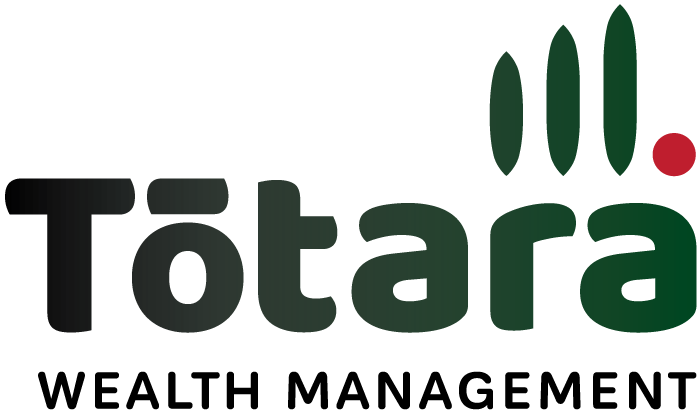The latest forecasts for the global economic outlook are pointing to gradual recovery, and growth assets have improved from their previous coronavirus losses. Markets, however, have remained choppy as investors waver between optimism about eventual recovery and renewed concerns about the final cost of the COVID-19 outbreak, as well as impending uncertainties (including second-wave infections). Investors will need to be realistic about the time it will take to get back to pre-outbreak conditions. On the plus side, monetary and fiscal policy everywhere is very supportive, and ongoing low-interest rates will help bonds preserve portfolio capital. In New Zealand, as elsewhere, there are signs that the very worst has passed, but strong recovery in corporate profitability is still some considerable distance away.
New Zealand Cash & Fixed Interest
With the Reserve Bank of New Zealand continuing to keep the official cash rate, or OCR, at 0.25%, other short-term rates have remained at very low levels, with the 90-day bank bill yield at 0.27%. Long-term interest rates are also unusually low, with the 10-year government bond yielding 0.8%. The kiwi dollar has been volatile--at the peak of the COVID-19 global sell-off it fell as low as 56.7 U.S. cents, but it is now back up to 64.1 cents. Year to date it is down 4.8% on its headline U.S. dollar rate and down 3.4% in overall trade-weighted value.
As with central banks overseas, the RBNZ is highly likely to remain committed to keeping interest rates very low until the impact of COVID-19 is over. The bank itself has said it will keep the OCR at 0.25% “until early 2021,” and while most forecasters expect it to keep the OCR there into later 2021, it is possible (as the forecasters at Westpac Bank think) that the bank could even cut the OCR into negative territory.
Property & Infrastructure
Listed property has fared badly in COVID-19 conditions. Year to date the S&P/NZX All Real Estate Index has lost 16.1% in capital value (14.9% including dividends) and has substantially underperformed the wider market share, where prices dropped by 6.1%.
Australian listed property also has had a hard time. The S&P/ASX 200 A-REITs index has taken a capital hit of 20.1% year to date (19.6% including dividends)—again, significantly worse than the overall market share’s 12.5% capital loss.
Global listed property has also struggled. The FTSE EPRA/NAREIT Global Index in U.S. dollars is down 18.9% in capital value, compared with the 8.2% capital loss for the MSCI World Index.
Global listed infrastructure has also been one of the bigger casualties to date of COVID-19. The S&P Global Infrastructure Index in U.S. dollars has lost 19.3% in capital value and delivered a net return of 18.4%, including the taxed value of dividends. Hedging into New Zealand dollars made little difference, with a net loss of 18.7%.
Australasian Equities
Once again local shares have followed the global pattern-- prices had been steadily recovering from their post-COVID-19 lows in mid-March, but weakened in recent days following a downbeat economic outlook from the Fed in the U.S. Year to date the S&P/NZX50 Index is down 6.1% in capital value. Investors remain focussed on the bigger names: The Top 10 index is down only 0.5%, whereas the small-caps index is down 17.9%.
Australian shares have also tracked the global equity market, and year to date the S&P/ASX200 Index is down 12.5% in capital value.
International Fixed Interest
Bonds have again proved their portfolio value in protecting capital, with the Bloomberg Barclays Global Aggregate Index in U.S. dollars up 2.8% year to date. In a climate where investors have been prioritising safety, global government bonds have done best with a 3.3% return, while global corporate bonds have returned 2.0%.
While the global economic outlook remains uncertain, one element looks more dependable--to a high degree of likelihood, the major central banks will be keeping interest rates very low for an extended period.
International Equities
After their sharp fall in February to mid-March, world share prices recovered steadily through April and May and into early June. In recent days, however, prices have dropped back on a more downbeat assessment of the post-COVID-19 global economic outlook.
Year to date the MSCI World Index of developed markets is down 8.2% in U.S. dollars. The loss would have been a significantly larger 13.4% without the relatively strong performance of the U.S. markets--the S&P 500 is down 5.9% and the Nasdaq Index is ahead for the year with a 6.9% gain. The Japanese market has also been relatively resilient, with the Nikkei down 5.7%. European markets, however, have been very weak: the FTSE Eurofirst300 Index has lost 14.9%, weighed down by the poor performance of the U.K. (FTSE100 down 19.1%) and France (CAC down 19.0%).
Emerging markets have continued to underperform relative to the developed world, with the MSCI Emerging Markets Index down 11.5% and its core BRIC--Brazil, Russia, India, China--markets down 10.0%. A relatively modest fall in China (Shanghai Composite down 4.3%) has been outweighed by large falls in the other BRIC economies.
DISCLAIMER: All care has been taken in preparing this information but to the extent that it is based on information received from other parties no liability is accepted by MorningStar or Totara Wealth Management for any errors or omissions. Morningstar and Totara Wealth Management give neither guarantee nor warranty nor make any representation as to the correctness or completeness of the information presented. Past performance is no guarantee of future performance. The material contained on this website is for general information purposes only and is not intended as, nor capable of being, financial advice or advice on any specific problem or any particular situation. Please read our full disclaimer.
